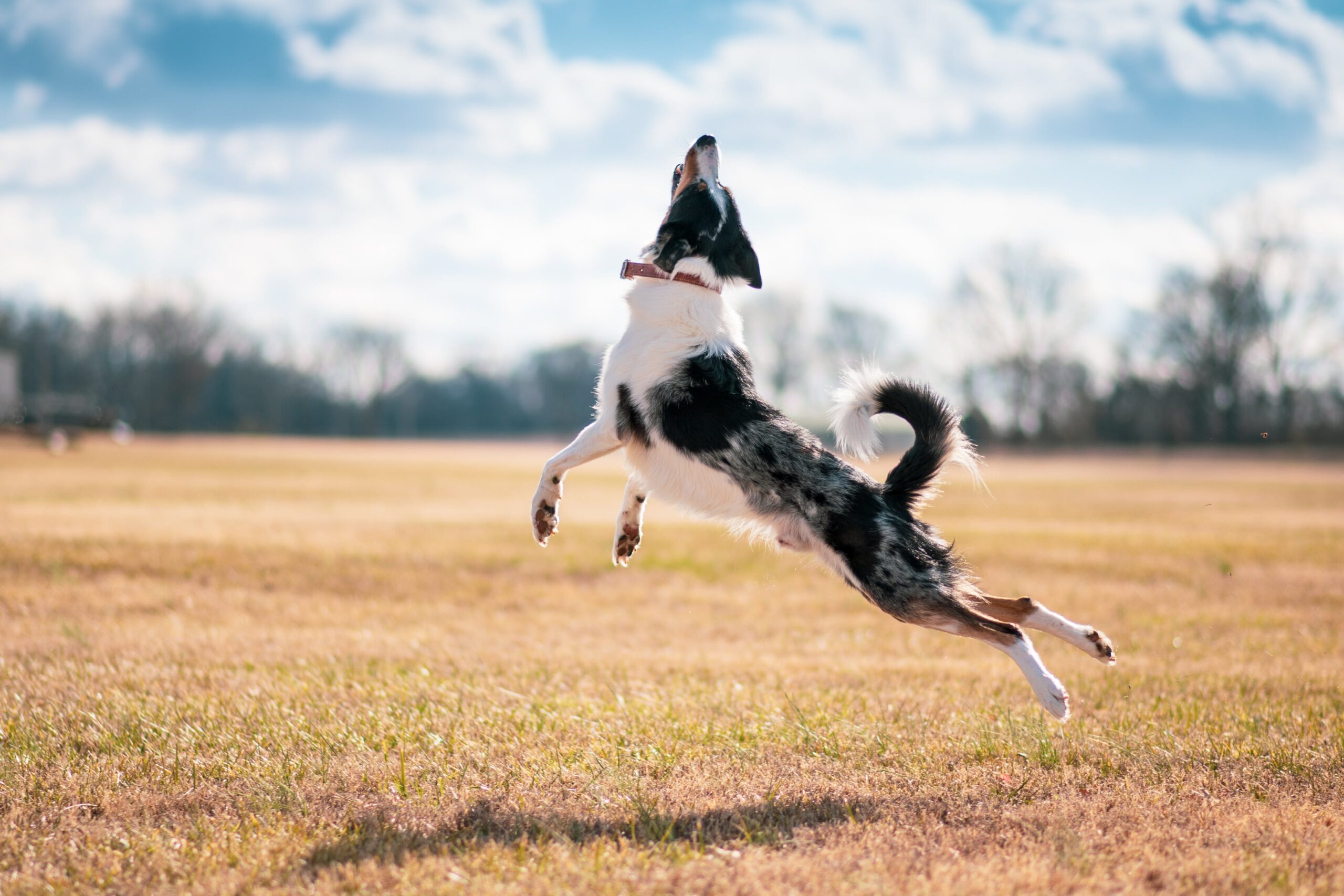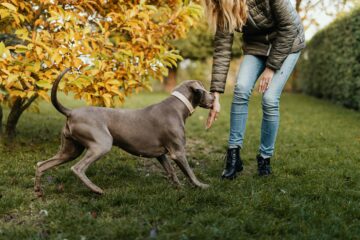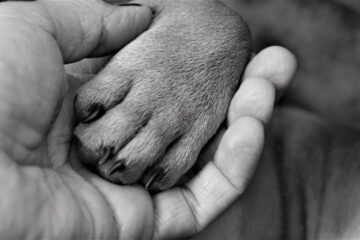Have you ever had your dog jump up with excitement when you walk in the door?
It’s cute, right?
But as they grow, that happy jumping can turn into a bit of a challenge.
Don’t worry—we’ve got you covered with 14 easy and proven methods on How to Stop Dog Jumping Up.
In this guide, we’re going to explore different tricks to help you handle and fix your dog’s jumping habit.
Whether you have a bouncy puppy or an older dog with some habits, these 14 methods are here to make sure your pup learns to greet you and others with a cool and collected attitude.
So, let’s jump into it (pun intended!), and learn how to make your dog’s greetings more chill and well-behaved.
Table of Contents
14 Proven Tips on How to Stop Dog Jumping Up
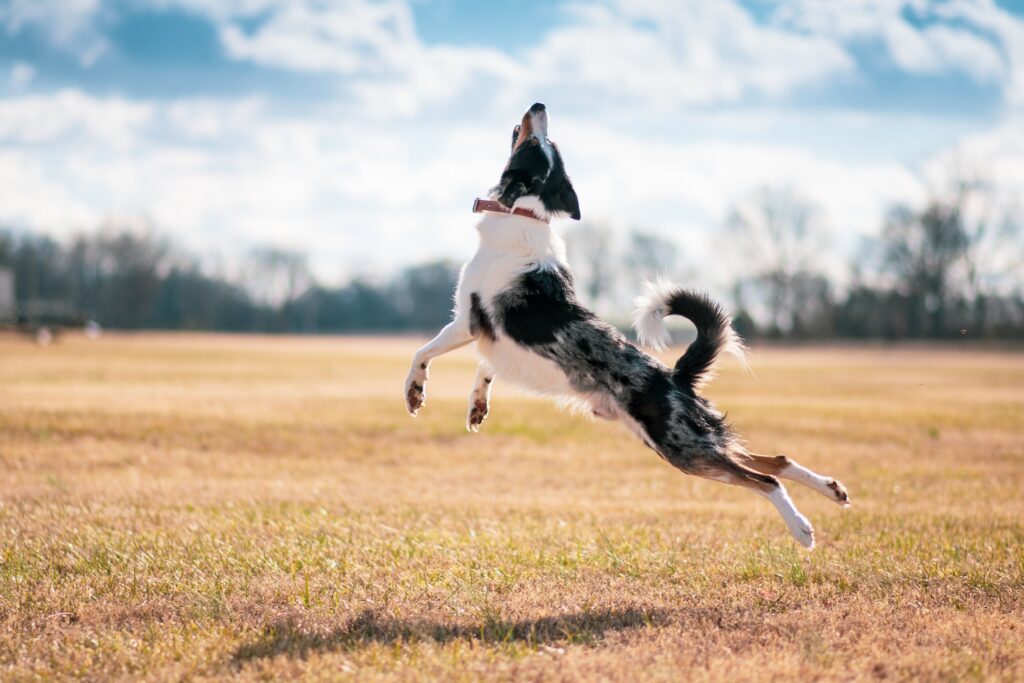
1] Understanding the Jumping Behavior
Delving into the reasons behind your dog’s jumping behavior is the first step in addressing and modifying it.
Dogs may jump to express excitement, seek attention, or out of habit developed during play.
By decoding their behavior, you gain insights into their motivations.
For example, if jumping is an expression of excitement, you can focus on redirecting that energy into positive outlets, helping your dog understand alternative ways to convey enthusiasm.
2] Establish Clear Communication
Teaching your dog consistent commands such as “sit” or “stay” provides a foundation for clear communication.
Dogs thrive on routine and clear expectations.
By consistently reinforcing these commands, you establish a language through which your dog comprehends what is expected of them.
This not only helps in addressing jumping behavior but also strengthens the overall communication between you and your furry companion.
Tip: “Clear communication sets expectations and helps your dog understand the desired behavior.”
3] Positive Reinforcement
Positive reinforcement is a powerful tool in modifying your dog’s behavior.
When your dog refrains from jumping and follows your commands, praise them enthusiastically and offer rewards such as treats or affection.
This positive feedback creates a positive association with not jumping, motivating your dog to exhibit the desired behavior repeatedly.
Consistency in providing positive reinforcement is key to reinforcing good behavior.
4] Minimize Excitement Triggers
Direct eye contact can heighten your dog’s excitement level, triggering jumping behavior.
When your dog jumps, avoid making eye contact and instead redirect your focus.
By doing so, you minimize the excitement triggers, signaling to your dog that calm behavior is more likely to receive attention.
This simple adjustment can contribute significantly to curbing jumping habits.
• Direct eye contact can heighten your dog's excitement and trigger jumping • When your dog jumps, avoid making eye contact and redirect your focus • Minimize excitement triggers, signaling that calm behavior gets attention • This adjustment helps significantly in curbing jumping habits
5] Teach the Impact of Jumping
Turning away and ignoring your dog when they jump is an effective way to convey the impact of their behavior.
By withdrawing attention, you communicate that jumping results in a loss of interaction.
Once your dog settles down, promptly reward them for calm behavior.
This strategy reinforces the connection between calmness and positive attention, encouraging your dog to choose a more composed approach.
6] Maintain Control During Greetings
Utilizing leash training is particularly valuable during greetings with guests or encounters during walks.
A leash provides you with control, allowing you to redirect your dog’s attention and prevent them from jumping on people.
Consistent leash training reinforces the expectation that calm behavior is required during interactions, aiding in the overall management of jumping tendencies.
Tip: “A leash provides guidance and helps redirect attention, preventing jumping on people.”
7] Training with Visitors
Consistency is crucial when addressing jumping behavior, and this extends to interactions with visitors.
Instruct guests on the commands and behaviors you’re working on with your dog.
Encourage them to follow consistent guidelines, such as ignoring jumping and rewarding calm behavior.
This collaborative approach ensures that everyone reinforces the same training principles, reducing confusion for your dog.
8] Interactive Playtime
Engaging in interactive play provides an outlet for your dog’s energy, reducing the likelihood of excessive jumping.
Incorporate toys and games that encourage physical activity, allowing your dog to release pent-up energy in a positive manner.
Regular play sessions contribute to a well-balanced and stimulated dog, decreasing the impulse to engage in unwanted behaviors like jumping.
Tip: “Incorporate toys and games that promote physical activity, providing an outlet for excitement.”
9] Set Boundaries
Establishing a designated greeting area sets clear boundaries for interactions and helps manage jumping behavior.
Teach your dog that certain spaces are off-limits for jumping, promoting a more controlled and respectful approach when meeting people.
This practice is especially useful in social settings or when introducing your dog to new individuals, fostering positive and polite interactions.
10] Expert Guidance
Consider enrolling in professional training classes to receive expert guidance tailored to your dog’s specific needs.
Certified trainers can assess your dog’s behavior, identify triggers for jumping, and provide personalized strategies for modification.
Professional training enhances the learning process in a structured environment, offering both you and your dog valuable tools for addressing jumping behavior effectively.
Tip: “Professional trainers can assess specific needs and provide personalized strategies for curbing jumping behavior.”
11] Use of Repellents
Exploring the use of pet-friendly repellents on surfaces where your dog tends to jump can be a practical solution.
These repellents discourage jumping onto furniture or specific areas, redirecting your dog’s behavior to more appropriate spaces.
Introducing repellents as part of your training strategy reinforces the boundaries you’ve established, aiding in the prevention of unwanted jumping.
12] Regular Exercise
Regular exercise is instrumental in addressing excess energy that may contribute to jumping behavior.
Tailor your dog’s exercise routine to their breed, age, and energy level.
Daily walks, interactive play, and mentally stimulating activities help channel energy positively.
A tired dog is less likely to engage in hyperactive behaviors like jumping, promoting a more composed and relaxed demeanor.
Tip: “Daily walks and play sessions are essential for a well-exercised and well-behaved dog.”
13] Seek Vet Advice
If jumping behavior is sudden, severe, or accompanied by other concerning signs, consult your veterinarian.
Underlying medical issues, such as pain or discomfort, could contribute to behavioral changes.
Rule out health-related causes to ensure a holistic approach to modifying your dog’s behavior.
Addressing any underlying health concerns contributes to the overall success of your training efforts.
14] Celebrate Progress
Celebrate your dog’s progress along the way.
Acknowledge and reward moments of calm behavior, even if they are small.
Positive reinforcement for consistent good behavior is integral to achieving long-term success in modifying jumping habits.
Creating a positive environment that encourages positive habits strengthens the bond between you and your dog, fostering a harmonious relationship.
In the celebration of progress, your dog becomes the hero of their own success story, and jumping becomes a distant chapter in the tale of good behavior.
How to Stop Dog Jumping Up: FAQs
How long does it take to stop dog jumping behavior?
The duration varies, but consistent training efforts can show improvement within a few weeks. Patience, positive reinforcement, and consistent training contribute to long-term success.
Can all dogs be trained to stop jumping?
Yes, all dogs can be trained to stop jumping with consistent and positive training methods. Adapt your approach based on your dog’s personality and specific needs.
Is it necessary to seek professional training for stopping jumping behavior?
While dedicated owners can make progress on their own, professional training can provide valuable insights and expedite the learning process. Consider it an investment in creating a well-behaved and respectful companion.
What if my dog continues jumping despite training efforts?
If jumping behavior persists, consult with a professional trainer or behaviorist to assess specific challenges and tailor solutions to your dog’s unique needs.
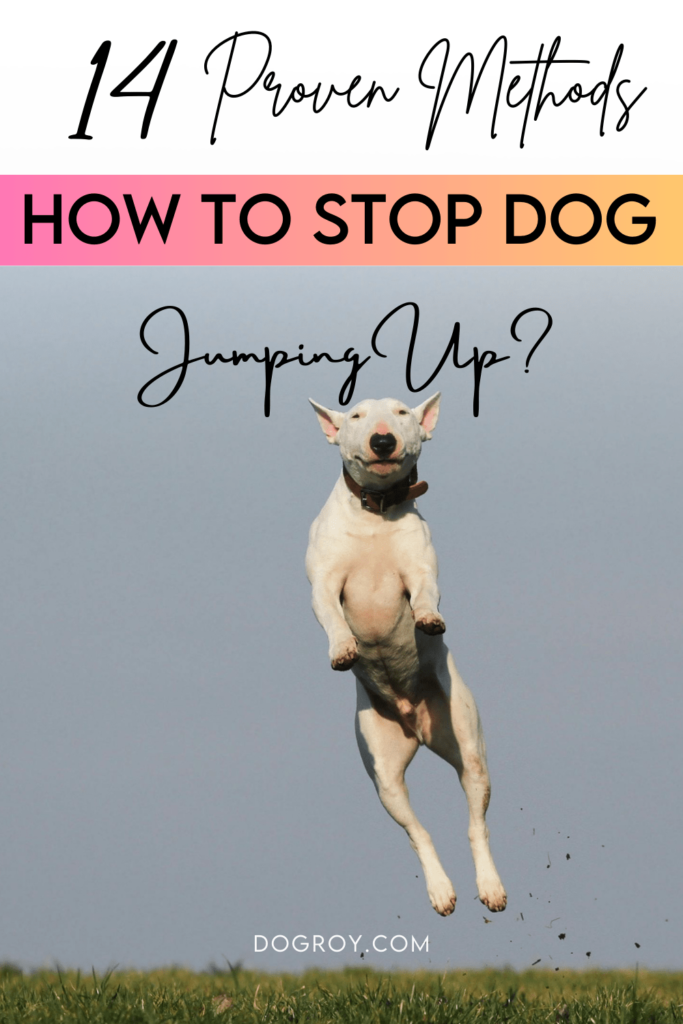
In conclusion, mastering the art of How to Stop Dog Jumping Up is a journey that leads to a calmer and more enjoyable relationship with your furry friend.
By incorporating the 14 proven methods outlined in this guide, you’ll be well-equipped to address and correct the jumping behavior effectively.
With consistency, positive reinforcement, and a bit of patience, you can create a harmonious living environment and ensure that your dog greets you and others with a more respectful demeanor.

